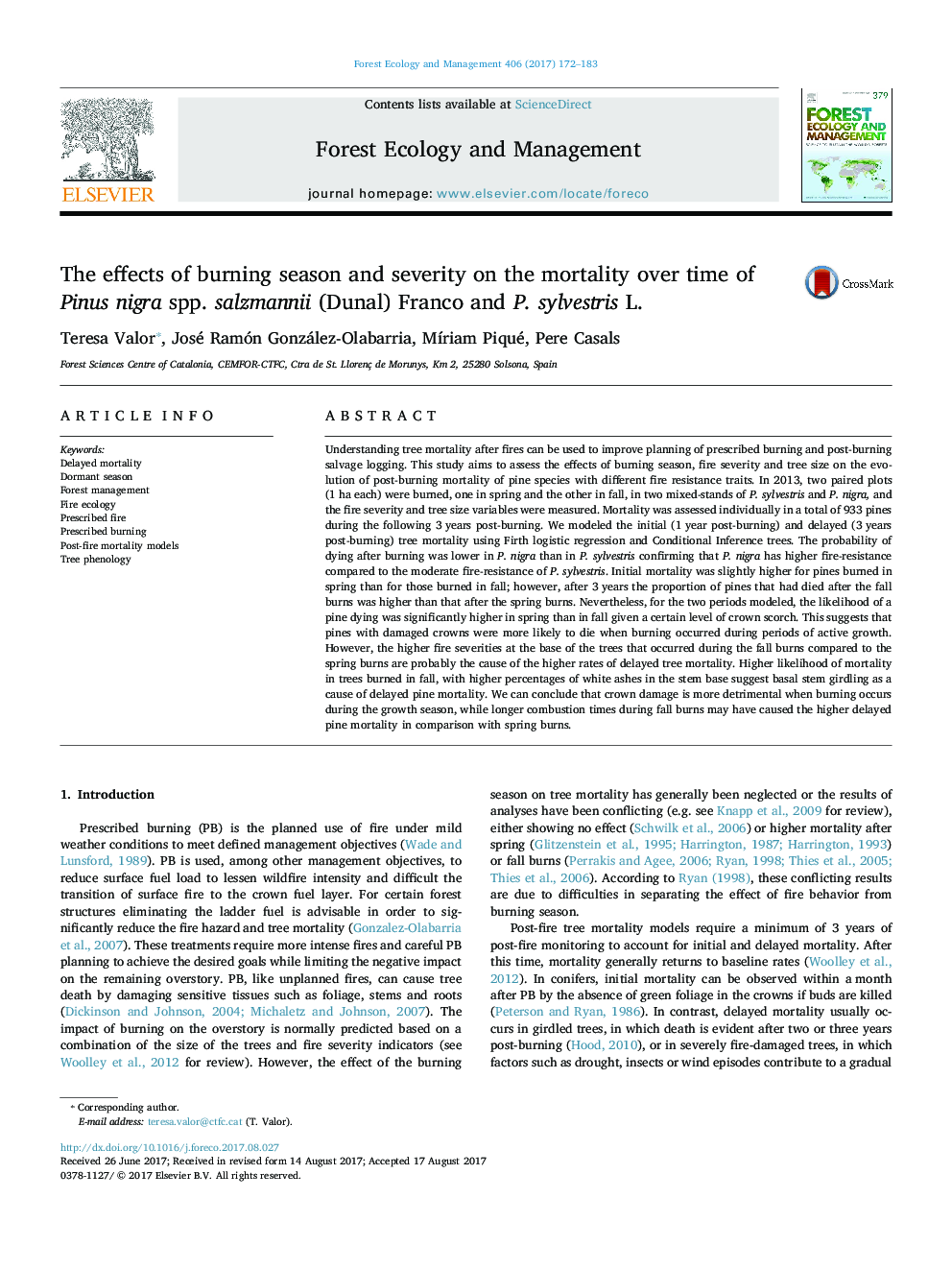| کد مقاله | کد نشریه | سال انتشار | مقاله انگلیسی | نسخه تمام متن |
|---|---|---|---|---|
| 6458998 | 1421352 | 2017 | 12 صفحه PDF | دانلود رایگان |

• P. sylvestris showed significantly higher mortality than the fire-resistant P. nigra.
• Initial tree mortality was higher after spring than after fall burns.
• Fall burns resulted in higher delayed mortality than spring burns.
• For a certain crown scorch level mortality was higher after spring than fall burns.
• Delayed mortality was caused by basal stem girdling rather than by tree phenology.
Understanding tree mortality after fires can be used to improve planning of prescribed burning and post-burning salvage logging. This study aims to assess the effects of burning season, fire severity and tree size on the evolution of post-burning mortality of pine species with different fire resistance traits. In 2013, two paired plots (1 ha each) were burned, one in spring and the other in fall, in two mixed-stands of P. sylvestris and P. nigra, and the fire severity and tree size variables were measured. Mortality was assessed individually in a total of 933 pines during the following 3 years post-burning. We modeled the initial (1 year post-burning) and delayed (3 years post-burning) tree mortality using Firth logistic regression and Conditional Inference trees. The probability of dying after burning was lower in P. nigra than in P. sylvestris confirming that P. nigra has higher fire-resistance compared to the moderate fire-resistance of P. sylvestris. Initial mortality was slightly higher for pines burned in spring than for those burned in fall; however, after 3 years the proportion of pines that had died after the fall burns was higher than that after the spring burns. Nevertheless, for the two periods modeled, the likelihood of a pine dying was significantly higher in spring than in fall given a certain level of crown scorch. This suggests that pines with damaged crowns were more likely to die when burning occurred during periods of active growth. However, the higher fire severities at the base of the trees that occurred during the fall burns compared to the spring burns are probably the cause of the higher rates of delayed tree mortality. Higher likelihood of mortality in trees burned in fall, with higher percentages of white ashes in the stem base suggest basal stem girdling as a cause of delayed pine mortality. We can conclude that crown damage is more detrimental when burning occurs during the growth season, while longer combustion times during fall burns may have caused the higher delayed pine mortality in comparison with spring burns.
Journal: Forest Ecology and Management - Volume 406, 15 December 2017, Pages 172–183